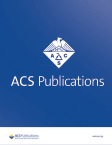摘要 PO4-19-12:试验进行中:一项观察性研究:检测接受(新)辅助芳香化酶抑制剂治疗的乳腺癌患者代谢综合征成分的变化
IF 3.4
Q2 PUBLIC, ENVIRONMENTAL & OCCUPATIONAL HEALTH
引用次数: 0
摘要
背景:(新)辅助系统治疗已被证明会对代谢健康产生不利影响,表现为体重增加、血脂异常和胰岛素抵抗,最终导致代谢综合征(MetS)的发生。代谢综合征会增加罹患 2 型糖尿病和心血管疾病的风险,并与乳腺癌复发、乳腺癌导致的死亡以及全因死亡的风险增加有关。我们曾报道,在接受(新)辅助化疗的代谢健康女性中,有 76% 的人在中位 15 周后会出现 MetS。芳香化酶抑制剂(AIs)对代谢健康的影响尚未在纵向研究中得到系统评估。我们假设在(新)辅助化疗中使用芳香化酶抑制剂会改变代谢参数,并已着手进行一项临床试验来研究这一问题。研究方法这是一项前瞻性观察研究,研究对象包括:绝经后新确诊的早期激素受体(HR)阳性乳腺癌患者,计划接受人工受体(AI)(新)辅助治疗。已接受或计划接受(新)辅助化疗或目前正在接受抗糖尿病药物或降胆固醇药物治疗的患者将被排除在外。所有患者都将接受基线评估,包括体重指数、包括血压、腰围在内的体格检查、体脂评估、血脂谱、胰岛素、代谢生物标志物,以及完成癌症治疗-内分泌症状功能评估(FACT-ES)。接受人工智能治疗后,将在治疗 4 个月和 12 个月后重复上述测试。主要终点是 4 个月时胰岛素抵抗的变化(通过胰岛素抵抗稳态模型评估 HOMA-IR 测定)。次要终点包括 HOMA-IR 在 12 个月时的变化,以及 MetS 各项指标、代谢生物标志物、人体测量和 FACT-ES 评分从基线到 AI 治疗 4 个月和 12 个月时的变化。将计算 HOMA-IR 测量值和次要终点的平均配对差异,并使用单侧配对 t 检验来检验统计显著性。在对年龄、种族/族裔和体重指数进行调整后,将使用单因子协方差分析来比较平均值。如果对从基线到 4 个月的 HOMA-IR 测量值的平均差异进行单侧配对 t 检验,我们将有 80% 的能力在 40 名患者中检测出 0.405 的效应大小(α = 0.05)。该研究于 2023 年 4 月开始招募,目前仍在进行中。如需了解更多信息,请联系 alevee@coh.org。鉴于人们越来越认识到代谢健康对乳腺癌预后的重要性,这些数据将为今后重点关注乳腺癌幸存者代谢健康的试验提供参考。引用格式:Alexis LeVee、Nora Ruel、Victoria Seewaldt、Joanne Mortimer。试验进行中:一项观察性研究,探讨接受(新)辅助芳香化酶抑制剂治疗的乳腺癌患者代谢综合征成分的变化[摘要]。In:2023 年圣安东尼奥乳腺癌研讨会论文集;2023 年 12 月 5-9 日;德克萨斯州圣安东尼奥。费城(宾夕法尼亚州):AACR; Cancer Res 2024;84(9 Suppl):Abstract nr PO4-19-12.本文章由计算机程序翻译,如有差异,请以英文原文为准。
Abstract PO4-19-12: Trial in progress: An Observational Study to Examine Changes in Metabolic Syndrome Components in Patients With Breast Cancer Receiving (Neo)Adjuvant Aromatase Inhibitors
Background: (Neo) adjuvant systemic therapy has been shown to adversely impact metabolic health manifested as weight gain, dyslipidemia, and insulin resistance, which ultimately lead to the development of metabolic syndrome (MetS). MetS increases the risk of development for type 2 diabetes mellitus and cardiovascular disease and is associated with an increased risk of breast cancer recurrence, death due to breast cancer, and all-cause mortality. We have previously reported that 76% of metabolically healthy women receiving (neo) adjuvant chemotherapy will develop MetS at a median of 15 weeks. The impact of aromatase inhibitors (AIs) on metabolic health has not been systematically assessed in a longitudinal study. We hypothesize that AIs in the (neo) adjuvant setting will alter metabolic parameters and have embarked on a clinical trial to study this.
Methods: This is a prospective observational study that will include: postmenopausal patients with newly diagnosed, early-stage hormone receptor (HR)-positive breast cancer with planned (neo)adjuvant treatment with an AI. Participants will be excluded if they have received or have planned treatment with (neo)adjuvant chemotherapy or are currently receiving antidiabetic medications or cholesterol-lowering agents. All patients will undergo a baseline assessment that includes: BMI, physical exam inclusive of blood pressure, waist circumference, assessment of body fat, lipid profile, insulin, metabolic biomarkers, and completion of the Functional Assessment of Cancer Therapy – Endocrine Symptoms (FACT-ES). Following institution of an AI, reassessment of the aforementioned tests will be repeated after 4 months and 12 months of therapy. The primary endpoint is the change in insulin resistance (as measured by HOMA-IR, homeostatic model assessment for insulin resistance) at 4 months. Secondary endpoints include the change in HOMA-IR at 12 months and the change in individual MetS components, metabolic biomarkers, anthropometric measurements, as well as FACT-ES scores from baseline to 4- and 12-months of AI treatment. The mean paired differences will be calculated for HOMA-IR measurements as well as for the secondary endpoints, and the 1-sided paired t-test will be used to test for statistical significance. One-way analysis of covariance will be used to compare means while adjusting for age, race/ethnicity, and BMI. Using a 1-sided paired t-test for the mean difference in HOMA-IR measurements from baseline to 4 months, we will have 80% power to detect an effect size of 0.405 with 40 patients (α = 0.05). Enrollment began in April 2023 and is ongoing. Contact alevee@coh.org for more information. Given the increased recognition of the importance of metabolic health in breast cancer outcomes, this data will inform future trials that focus on maintaining metabolic health in breast cancer survivors.
Citation Format: Alexis LeVee, Nora Ruel, Victoria Seewaldt, Joanne Mortimer. Trial in progress: An Observational Study to Examine Changes in Metabolic Syndrome Components in Patients With Breast Cancer Receiving (Neo)Adjuvant Aromatase Inhibitors [abstract]. In: Proceedings of the 2023 San Antonio Breast Cancer Symposium; 2023 Dec 5-9; San Antonio, TX. Philadelphia (PA): AACR; Cancer Res 2024;84(9 Suppl):Abstract nr PO4-19-12.
求助全文
通过发布文献求助,成功后即可免费获取论文全文。
去求助
来源期刊

ACS Chemical Health & Safety
PUBLIC, ENVIRONMENTAL & OCCUPATIONAL HEALTH-
CiteScore
3.10
自引率
20.00%
发文量
63
期刊介绍:
The Journal of Chemical Health and Safety focuses on news, information, and ideas relating to issues and advances in chemical health and safety. The Journal of Chemical Health and Safety covers up-to-the minute, in-depth views of safety issues ranging from OSHA and EPA regulations to the safe handling of hazardous waste, from the latest innovations in effective chemical hygiene practices to the courts'' most recent rulings on safety-related lawsuits. The Journal of Chemical Health and Safety presents real-world information that health, safety and environmental professionals and others responsible for the safety of their workplaces can put to use right away, identifying potential and developing safety concerns before they do real harm.
 求助内容:
求助内容: 应助结果提醒方式:
应助结果提醒方式:


